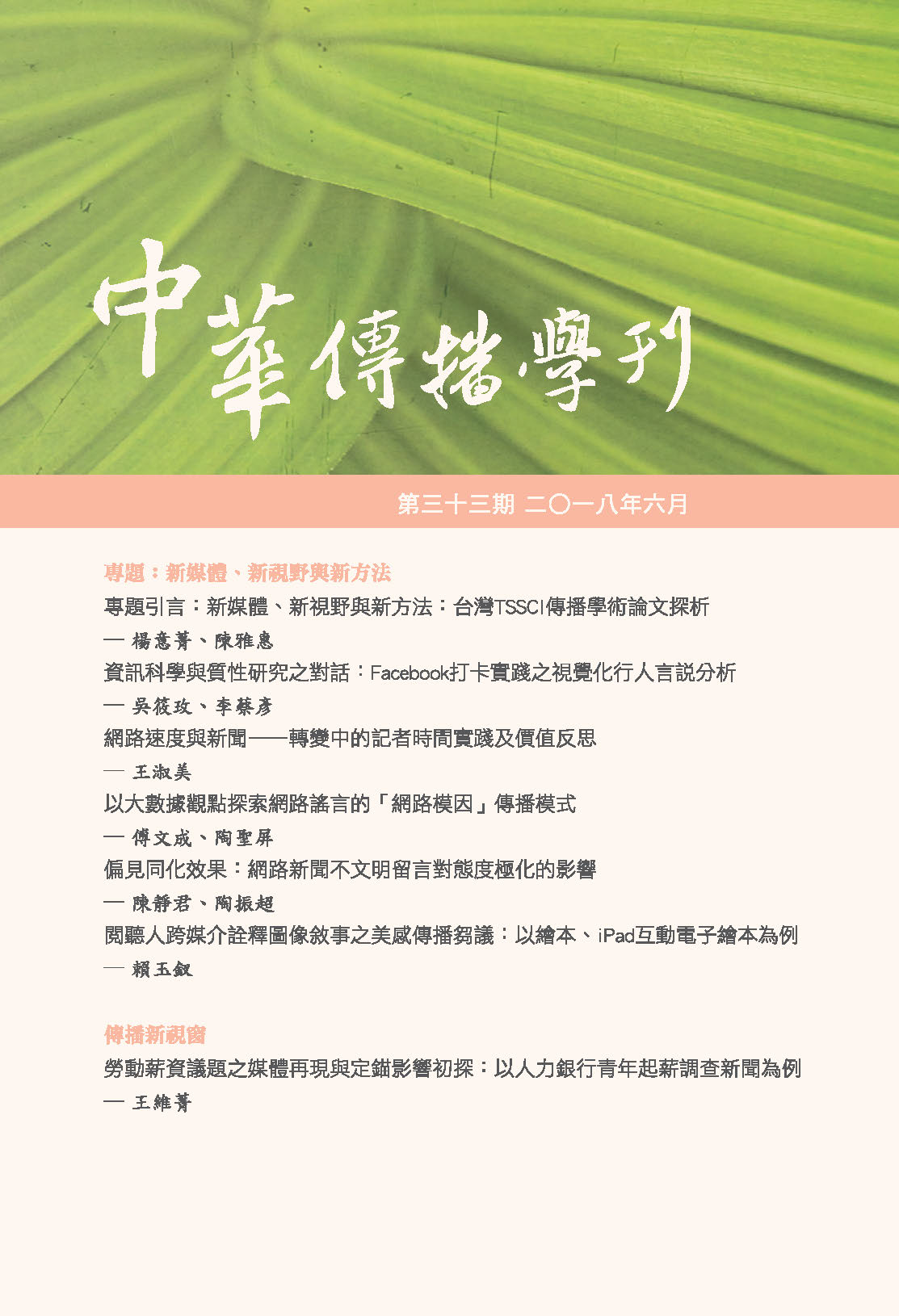 閱覽人數: 2563
閱覽人數: 2563
June
2018
No. 33
新媒體、新視野與新方法
New Media, New Vision, and New Methods頁數:99 - 135
作者(中)
傅文成、陶聖屏
作者(英)
Wen-Cheng Fu & Sheng-Ping Tao
關鍵詞(中)
大數據、社群網站、網路模因、網路謠言
關鍵詞(英)
big data, social media, Internet memes, online rumors
中文摘要
本研究目的為應用網路模因理論為架構,以2013 年洪仲丘事件為背景,透過大數據文本分析法,以R 語言及簡易貝氏機器(naïve bayes classifier) 學習工具, 蒐整12,197 網路公開頁面, 分析90,062 則文本,檢視社群網站及網路傳統媒體的謠言傳播模式。研究發現相較全假謠言,半真假謠言在被複製的持續時間、傳統媒體複製次數、社群媒體複製次數均明顯高於全假謠言。半真假謠言變異程度與擴散程度皆高於全假謠言,且謠言在社群媒體上的傳播能力明顯高於網路傳統媒體。
英文摘要
This study applied the concept of Internet memes and the background of the 2013 Hung Chung-Chiu case to examine the dynamics and circulation of fake news and rumors on social media and in traditional media. By applying big data analytics with R and Bayesian machine learning, this study examined the interactions and interplay of misinformation in multimedia convergence. Our findings, retrieved from 12,197 public pages and 90,062 news items, revealed that “partial rumors” are significantly more contagious than“pure rumors” in terms of replication, variation, and competition. Furthermore, compared with online news media, fake news circulates on social media more intensively and frequently.